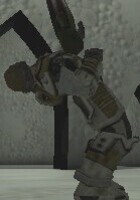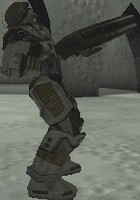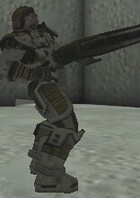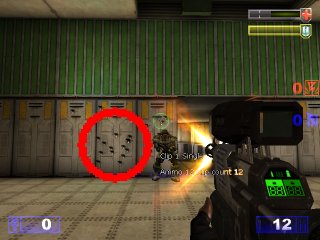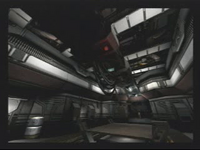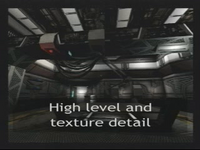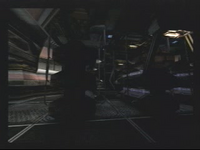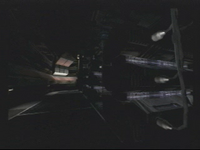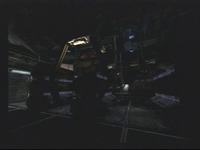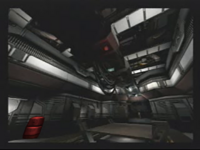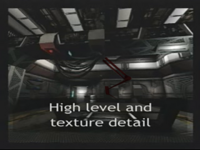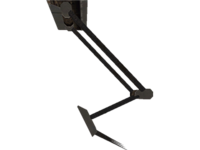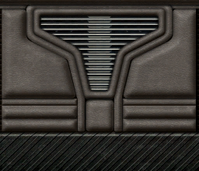A closer look at the Unreal Technology Demo
At the European Computer Trade Show, on September 6th 2000, Epic Games unveiled a technology demonstration of the Unreal Engine, showing new features and capabilities that they were introducing to the engine. A number of new features were shown that Epic Games were looking to introduce to the engine in the short term, along with PlayStation 2 support, but with the long term goal of producing a new engine entirely. This iteration of the engine eventually came to be known as the Warfare engine, now known as Unreal Engine 2, the predecessor to Unreal Engine 3.
The technology demonstration was unsurprisingly comprised of a number of different demonstrations but a lot of these provide some fascinating insight into the development of the engine and the upcoming games at the time. We’ll be going over each of these as they appeared in the video below and doing a short analysis on each.
Skeletal Animation
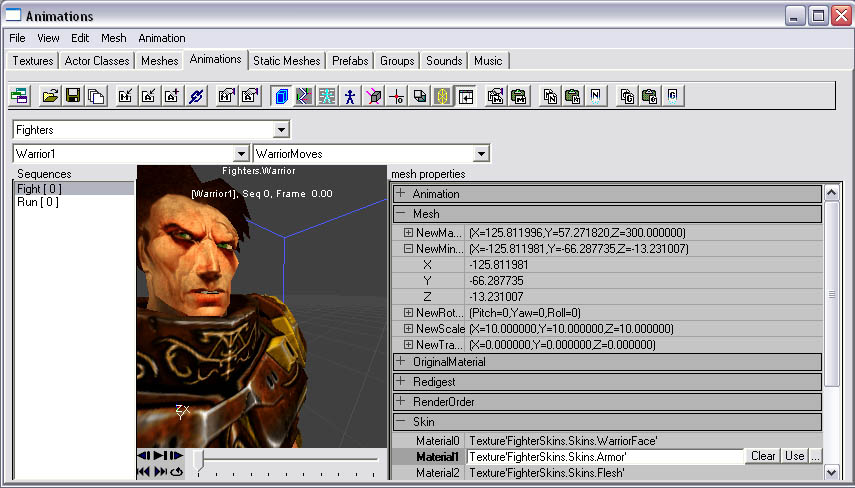 Warrior as shown in the Unreal Technology Demonstration.
Warrior as shown in the Unreal Technology Demonstration.
The first scene in the video shows us a demonstration of the then new skeletal animation introduced to Unreal Engine.
The model shown here doesn’t appear to be related to any particular game that was in development at the time, so it seems assumable it was produced for the purposes of the demonstration. What appears to be the same model can be seen on the top left corner of the EpicKnights website too, which was a site created by James Green, the lead animator at Epic Games at the time.
Previously, animations in Unreal Engine were done per-vertex, which meant that the engine would interpolate the vertices to a new coordinate on each frame, essentially by storing multiple copies of the whole mesh for each frame of an animation. For this, Unreal Engine had it’s ‘3D’ model format implementation which was split between two separate files; one containing the mesh and the other containing the transformation of the vertices for each frame of the animation.
It was a little inefficient but it was quicker for the CPUs of the time to process when compared to using skeletal animation, the only downfall was that it used more memory, which inflicted heavy limitations on the complexity of animations which artists could create. The same method was used by id Software for Quake, Quake II and Quake III, though Quake III extended on this to take greater advantage of the higher memory available on systems at its time of release by using greater precision for the coordinate of each vertex (the MDL and MD2 formats, used in Quake and Quake 2 respectfully, used a very low level of precision that resulted in a wobbly effect for animations).
This format saw continued use in Unreal Engine 2 certainly to a lesser extent than before. An example are the flags used throughout Unreal Tournament 2004, which took advantage of per-vertex animation.
The addition of support for skeletal animation to the engine meant that artists could introduce far more complex animations, as well as the ability to blend multiple animations together or for programmers to alter how bones moved during run time to allow characters to look in specific directions, without even requiring a predefined animations. Obviously the implications at the time were huge.
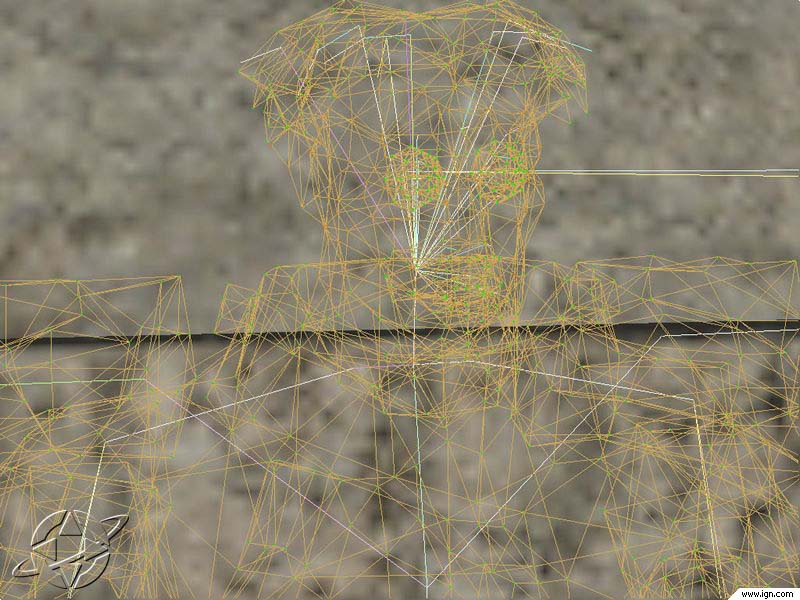 A wireframe view of the Warrior mesh, showing the skeleton as well. This gives a good glimpse at the bones used to perform the facial animation.
A wireframe view of the Warrior mesh, showing the skeleton as well. This gives a good glimpse at the bones used to perform the facial animation.
Skeletal animation saw a surge in use at the end of the 90s, and by 2001 almost all commercial games appear to have been heavily using skeletal animation over per-vertex animation. Regardless, the technology certainly wasn’t new, it was developed in the late 1980s and saw use within films such as Toy Story, released in 1995, and was a major hallmark of the cancelled game Into the Shadows, which was in development by Triton in 1995.
One key feature Epic Games seems to have chosen to point out here is the ability to add facial animations to characters, likely to demonstrate the level of complexity that artists could expect from the addition of this new technology. The system did not introduce anything on the level that we would later see brought by Valve’s Source Engine, which used a combination of skeletal animation for typical motion and per-vertex animation for facial animations, which gave animators a greater degree of control than was achievable from skeletal animation for facial animation.
From the screenshot below which came from Epic Games’ Unreal Developer Network, you can see the environment in which the facial animations would be produced.
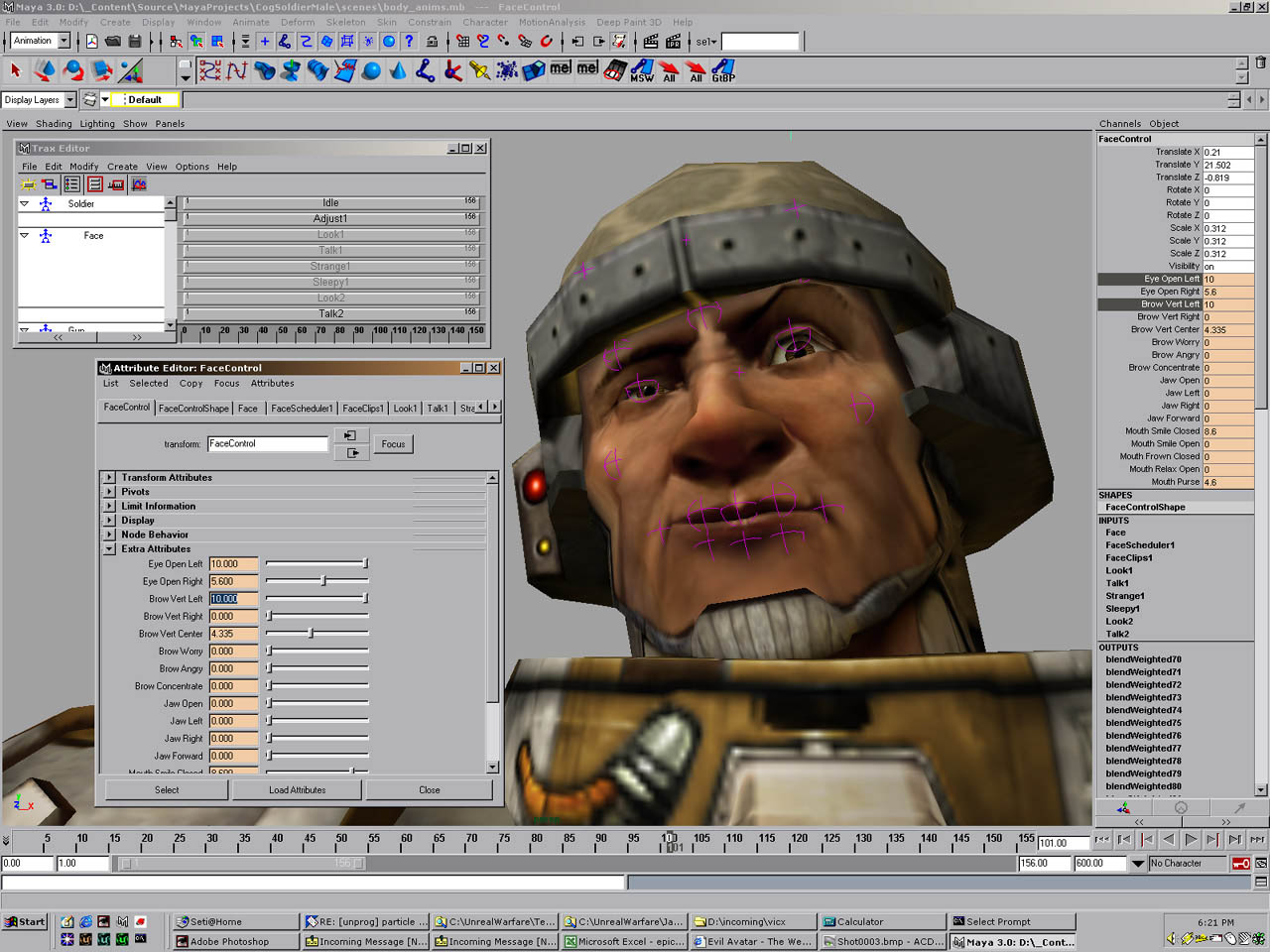 Screenshot taken showing Unreal Warfare soldier being manipulated in Maya.
Screenshot taken showing Unreal Warfare soldier being manipulated in Maya.
Another downside of Epic Games’ implementation of facial animation, from my understanding, is that the facial animation wasn’t very flexible; the facial animation was only controllable from modelling tools such as Maya and would have been baked down into individual animations. This would have meant that any changes for an expression would have had to been made outside of Unreal Engine’s UnrealEd, then imported back into the engine again once completed.
To a limited extent, it was possible to export a number of different facial animations, each for various expressions, and for these to have blended together to be combined with animations for speech or other bits of animation, so that characters could express themselves using the same mouth movements without having to create unnecessary duplicates of animation, but this technique would have been very limited to those seen in the years to come that allowed more precise control over facial animation.
 Valve opted to use an alternate method for facial animation in the Source Engine; per-vertex animation.
Valve opted to use an alternate method for facial animation in the Source Engine; per-vertex animation.
By comparison, Valve introduced a more flexible method which was supported by their own tool, rather boringly dubbed the “Choreography Tool”, or “Faceposer” as it’s more commonly known. By comparison, this tool allowed Valve to produce entire scenes, using their own library of animation overlays and flexing the faces of the characters throughout the scene, and then to preview them within the tool before placing the scene within a level.
It’s worth noting that skeletal animation was eventually introduced to Unreal Tournament in a subsequent update and also used widely for the PlayStation 2 release of the game, however it didn’t see such extensive use until developers began utilising Epic Games’ then new Unreal Warfare engine in 2001.
In an IGN article produced for the demonstration, Epic Games apparently put forward a statement on the new feature that reads the following.
The skeletal animation system, using quaternion-based interpolation, allows for both loss-less and lossy compression of the motion data. The rendering pipeline of the engine is being modified so that characters (and additive solid geometry) can be processed through the hardware T&L pipeline of Direct3D cards with that feature. That means the theoretical limit for polygons and, more importantly, the numbers of characters on screen jumps substantially for applications intended for Microsoft Xbox or computers equipped with hardware T&L-capable cards like Nvidia GeForce or ATI Radeon and the myriad of others that will follow. The new features of DirectX 8 in particular will enable skeletal characters to make full use of the hardware to accelerate rendering of smooth-skinned meshes.
It’s interesting to hear Epic Games refer to the Xbox here, considering that Unreal Championship ended up becoming an Xbox exclusive.
High Detail Models
This part of the video is one of the more interesting segments historically, as it shows a look at an early version of one of the Locust soldiers, which were later found in Gears of War, and at this point they were referred to as the Geist (a German word, meaning “Ghost” in English). At this time, Gears of War was known as Unreal Warfare (the same name that was widely used to describe Epic Games’ upcoming technology) and was in the very early stages in development; very different to the game we received in the end, in terms of both gameplay as well as visually.
The character displayed uses the symbolism of the Locust prominently on his front as well as on his back, which appears to be one of the few designs which has survived the evolution from Unreal Warfare to Gears of War. It’s evident from this that the symbolism of the Locust was established very early on and surprising that Epic Games retained this throughout the game’s development.
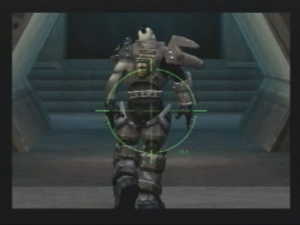
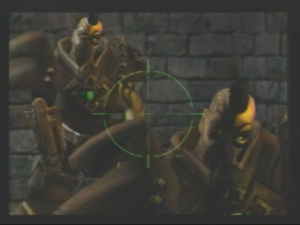
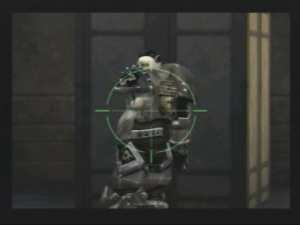
The character’s design here, especially with regards to the human appearance and de-saturated skin, seems very similar to what we saw in a later Unreal Engine technology demonstration shown in 2002, which also showed content intended for Unreal Warfare. It’s likely this design, at least stylistically, for the Locust, remained for quite sometime and likely wasn’t entirely thrown out until the team ditched Unreal Engine 2 around the end of 2003, after which the designs in the final game retained the humanoid appearance of some classes of the Locust and the de-saturated skin tone, but overall it seems Epic Games settled upon a more alien design.
It’s possible the reason a less human appearance was chosen for the Locust was due to the team changing focus towards a single-player experience, rather than the class-based multiplayer they had originally envisioned for the game. As this change occurred, the primary enemy of the player within the game became the Locust; this meant opening up the range of characters they would be pitted against and to introduce more variety. This also likely helped create more of a divide between both the Locust and Cog generally, and was intended to make the Locust appear considerably less friendly.
When the scene switches over to show the model from the back we can see a panel with the label ‘SLARIOUX’. It’s possible that this is the name of the character we’re seeing here, the implication could be that this was intended to be a character of importance? It’s unlikely we’ll ever know for sure but this certainly wasn’t something we saw retained in later iterations of the game, as the Locust eventually had their own language and generally their armour did not feature names of any sort. Considering Warfare’s multiplayer focus at this point in its development, another possibility here is that the name plate would feature that player’s own name - something that Unreal Tournament 2004 would feature to a limited extent, displaying the player’s name on the number plate of a vehicle they’re occupying.
While not featured within the video, we can see that the Cog also retained the same symbolism which we see widely used in the final game, which is confirmed by several screenshots featured on the UDN from around the same time. This said, the Cogs design in these screenshots remains very different to that which we see in the final game, and the overall cog theme is perhaps not quite as pronounced as in the overall design below. Again it’s interesting that Epic Games seemingly settled on the symbolism for both sides so early on.
In the above images, it’s certainly interesting to see that the Cog soldier appears to be using the same skeletal rig featured in Unreal Tournament’s PS2 debut, which introduced skeletal animation. It’s also interesting to see the Cog weilding the weaponry also featured in Unreal Tournament; a possible implication that Unreal Warfare was initially using Unreal Tournament as it’s foundation when it started development, this is perhaps further supported by screenshots showing featuring Unreal Tournament’s HUD while displaying assets intended for Unreal Warfare, one of which can be seen below.
Since the HUD here is from the PlayStation 2 version of the game, which introduced the support for skeletal animation, it’s perhaps not surprising to see the Cog soldier making use of the same skeletal rig and animation set. As a matter of fact, it’s very likely that the support for skeletal animation featured in Unreal Engine 2 is simply an iteration of the skeletal animation introduced in the PlayStation 2 version of Unreal Tournament, as that iteration of the engine continued to evolve internally within Epic Games. It certainly seems to be the case that Unreal Warfare, as a game, was built from the PlayStation 2 version of Unreal Tournament.
High Level and Texture Detail
Again, this segment of the video is quite interesting for historical reasons, because it possibly gives us some insight into how other games being produced, using Epic Games’ then new technology, were progressing at the time. Initially we see a map I can’t identify, which was probably produced purely for the purposes of the demonstration, but afterwards we see something interesting; a rather futuristic setting.
Several games that Epic Games were involved with at the time featured a futuristic setting, these range from Unreal Warfare, Unreal 2 and the working title, Unreal Tournament 2, so these screenshots could in essence show any one of these.
Unfortunately I can’t say for certain what we’re seeing here but I believe, on unfortunately very little evidence mind you, that this is Unreal 2. Why? Well there appear to be some subtle indicators here that we can pick out when comparing the shots to content that exists in Unreal 2. If this were the case however, Unreal 2 would have been at such a primitive state at this time - though there is certainly indication that the game was in development at this time.
Unreal 2, of course the sequel to Unreal, was in development outside of Epic Games, and was instead being produced by Legend Entertainment. Unfortunately after the release of the game and shortly after the release of it’s multiplayer expansion, the studio was closed down.
As you can see, there are some rather subtle indicators but of course it’s hard to know for sure - I believe there likely are other textures that match up though.
If there was more evidence to link this to Unreal 2, I would even go as far as saying that this appears to be an earlier iteration of the level found in this screenshot below which was released during Unreal 2’s development, in late May of 2002 (though this iteration of the level actually dates as far back as 2001, as it’s included in a leaked build of Unreal 2 from the time). It features the same crane mechanism, a similar looking table and uses textures from the same texture group, though clearly it’s considerably more varied and detailed, and that’s just speculation on my part.
If this is true, it does imply that the operating table, as it is, has the crane mechanism positioned in the wrong place in the video. Oops.
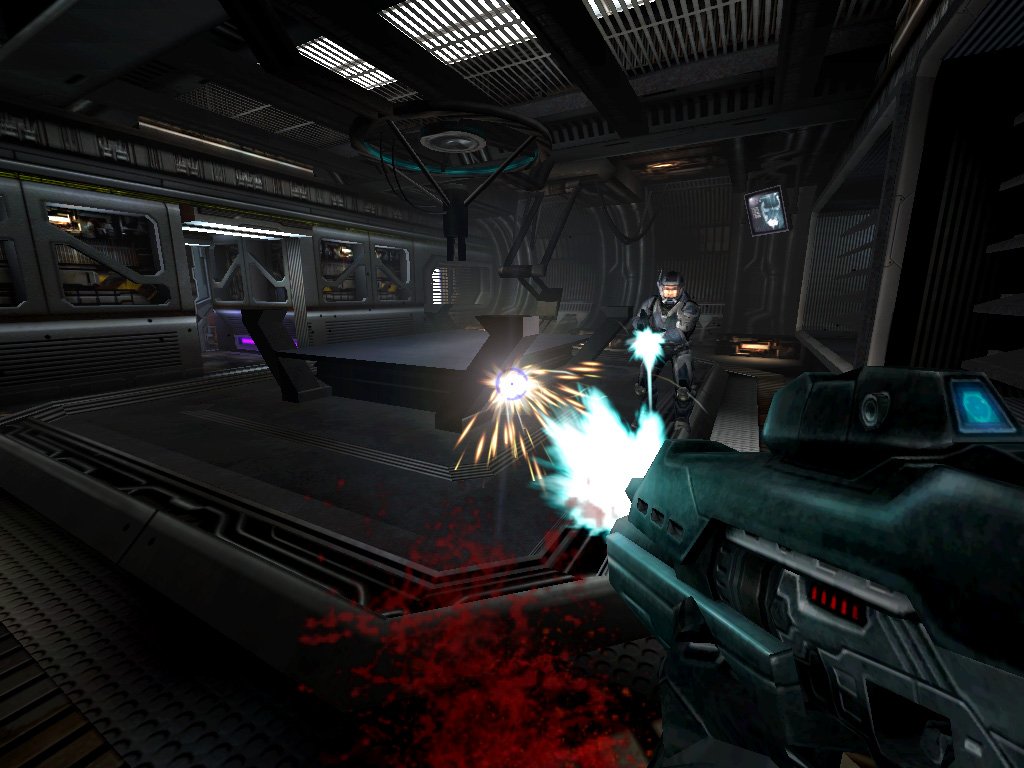
I hope you enjoyed this article! Eventually I want to cover more regarding the development of Unreal Warfare and the development of the Unreal Engine in general, so stay tuned!

Resources
GamesTM - Gears Of War intended to be like Battlefield, had mechs and class-based combat
GDC 2001 Unreal Technology Demo

